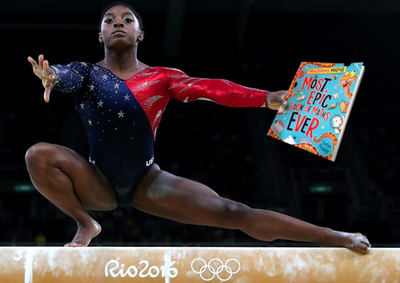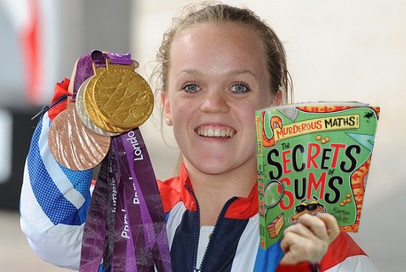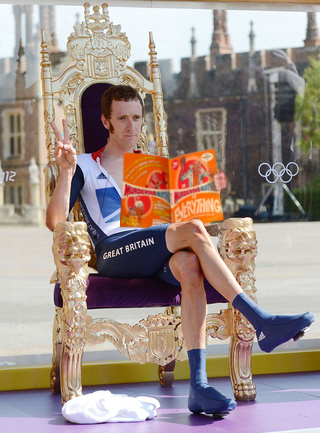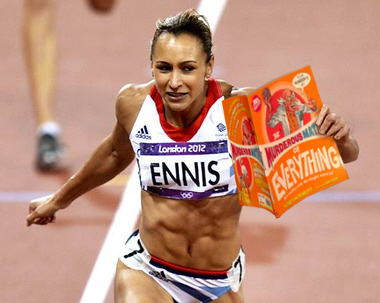 Olympic gold medals are actually 92.5% silver! Olympic gold medals are actually 92.5% silver!
They have a thin covering of 6 grams of gold.
 Although the medals have to be at least 3mm thick and 60mm wide, recently they have got much bigger. They measure 85mm in diameter and 7mm thick and can weigh over 500 grams. Although the medals have to be at least 3mm thick and 60mm wide, recently they have got much bigger. They measure 85mm in diameter and 7mm thick and can weigh over 500 grams.
 Wearing a medal would feel like having a tin of soup hanging round your neck! Wearing a medal would feel like having a tin of soup hanging round your neck!
 Maybe Olympians would prefer to win a valuable set of 14K
gold stacking bracelets rather than a heavy gold medal! Maybe Olympians would prefer to win a valuable set of 14K
gold stacking bracelets rather than a heavy gold medal!
 Kids can try to make
DIY Olympics crafts like colorful glitter bracelets and paper torches for the games. Kids can try to make
DIY Olympics crafts like colorful glitter bracelets and paper torches for the games.
|
 |
 |
 |
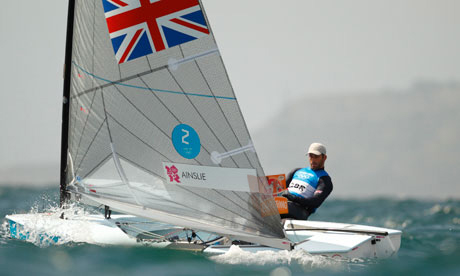 |
 The last real gold medals were made in 1912. The last real gold medals were made in 1912.
 To make the medals for the 2021 Tokyo Games, over 30kg of gold, 4,000kg of silver and 2,700kg of bronze were recovered from re-cycled electronics including phones, games and laptops. To make the medals for the 2021 Tokyo Games, over 30kg of gold, 4,000kg of silver and 2,700kg of bronze were recovered from re-cycled electronics including phones, games and laptops.
 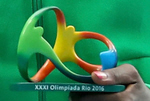 Usually medal winners also get a little bunch of flowers, but in Rio 2016, they each got a colourful medal holder.
Usually medal winners also get a little bunch of flowers, but in Rio 2016, they each got a colourful medal holder.
 The value of the metals in a 2012 gold medal was about $700. The value of the metals in a 2012 gold medal was about $700.
|
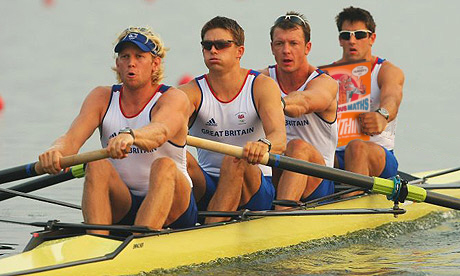 |
 In total there are around 5,000 medals made for each Olympics and Paralympics, roughly 32.5% gold, 32.5% silver and 35% bronze. In total there are around 5,000 medals made for each Olympics and Paralympics, roughly 32.5% gold, 32.5% silver and 35% bronze.
 In the 1896 games in Athens, they didn't have gold medals. The winners got silver and the seconds got bronze. In the 1896 games in Athens, they didn't have gold medals. The winners got silver and the seconds got bronze.
 In 1900 in Paris the winners got works of art instead of medals.
In 1900 in Paris the winners got works of art instead of medals.
 In the 2016 Rio games, the medals for the Paralympic winners are hollow with a tiny steel ball inside, so that visually impaired people can identify them. When rattled, gold medals are the loudest and bronze medals are the quietest.
In the 2016 Rio games, the medals for the Paralympic winners are hollow with a tiny steel ball inside, so that visually impaired people can identify them. When rattled, gold medals are the loudest and bronze medals are the quietest.
|
 |
